
You typed “buy online cheap generic Lasix” because you want the lowest price without getting scammed or stuck waiting for a refill. I’m with you. Furosemide is a workhorse for swelling and heart failure, but the shopping part shouldn’t be the stressful bit. Here’s a straight path to a safe, legal purchase, realistic prices, and the few pitfalls that blindside people every week.
Heads-up on expectations: this is about legitimate pharmacies, not shady shortcuts. You’ll see how to check if a site is licensed, what a fair cash price looks like in 2025, and how to keep your refill on time. I’ll also call out the side effects that actually matter day to day so you know when to act.
What you came here to do, in plain English:
- Find a legit place to generic Lasix online without overpaying.
- Understand real 2025 prices and how to get them (with or without insurance).
- Pick the right strength, quantity, and refill setup so you don’t run out.
- Avoid risky sites, counterfeit pills, and no‑prescription traps.
- Stay safe: know the red flags for side effects, drug interactions, and lab checks.
- Have a backup plan if your pharmacy is out of stock or the price jumps.
What “cheap Lasix” should look like in 2025 (and what to avoid)
Furosemide (brand: Lasix) is a loop diuretic used for swelling from heart failure, liver disease, kidney disease, and sometimes blood pressure. It makes you pee out extra salt and water, which is great for ankles that look like balloons and shortness of breath that creeps up stairs.
Common retail options:
- Tablets: 20 mg, 40 mg, 80 mg (most common: 20 mg or 40 mg)
- Oral solution: typically 10 mg/mL for those who need liquid
- Typical quantities: 30- or 90‑day supplies
What “cheap but legit” usually means:
- A licensed U.S. pharmacy you can verify with your state board or the National Association of Boards of Pharmacy (NABP). The FDA’s BeSafeRx resources explain exactly how to check this.
- A fair cash price for tablets when you use a discount card or coupon-more on price bands in the next section.
- No dodgy offers to ship without a prescription. In the U.S., furosemide is prescription-only. Sites that skip the prescription step are a red flag.
Red flags that aren’t worth the risk:
- “No prescription needed.” That’s often illegal and a common counterfeit channel.
- Prices that look impossible (think pennies for a 90‑day supply) plus international shipping from unknown locations.
- No U.S. address, no pharmacist contact, no privacy policy, and no way to reach support.
- Weird payment methods only (crypto, wire, gift cards).
Quick context if you’re shopping from outside the U.S.: regulations differ. In the U.K., for example, you’d go through an MHRA‑registered site and need a valid prescription. In Canada, a prescription is also required. Cross‑border imports to the U.S. are tightly restricted; those “international pharmacy” sites that ignore this are not a safe bet. Stick with licensed pharmacies where you live or your health plan’s mail order.
Prices, discounts, and the safe way to buy online without getting burned
Here’s what furosemide pricing looks like in 2025 if you’re in the U.S. These are typical cash prices using common pharmacy discount cards-what most people actually pay when they don’t run it through insurance.
- Furosemide 40 mg tablets (30 count): about $3-$15 with a widely available coupon.
- Furosemide 40 mg tablets (90 count): about $8-$25 with a coupon.
- Furosemide 20 mg tablets: often a few dollars less than 40 mg on a per‑tablet basis; similar ranges overall.
- Oral solution: varies more; plan on $15-$50 depending on bottle size and pharmacy.
Brand‑name Lasix is pricier and rarely necessary-FDA‑approved generics must meet bioequivalence standards to the brand. If your prescription is written as “Lasix” and your price looks high, ask your pharmacist to dispense the generic furosemide unless your prescriber marked “DAW” (dispense as written).
How to get the lowest legitimate price today:
- Ask your prescriber to e‑send the prescription to a licensed online or local pharmacy you trust. E‑prescribing reduces errors and speeds things up.
- Search a couple of discount card sites or your pharmacy’s own coupon page for “furosemide 20 mg” or “furosemide 40 mg” and your exact quantity. Screenshot or save the BIN/PCN/Group/Member ID details if needed. Many pharmacies can apply these at the counter or online checkout.
- Compare a 30‑day price vs a 90‑day price. With cheap generics, 90‑day often wins on convenience and unit cost.
- Call or chat with the pharmacy to confirm the final price before they process the fill. Prices can shift slightly with wholesaler changes.
- If you have insurance or Medicare Part D, check your plan’s mail‑order pharmacy. Sometimes you’ll see $0-$5 copays and automatic refills, which beats even the best coupon.
Shipping and timing you can expect:
- Standard shipping: 3-7 business days after the pharmacy verifies your prescription.
- Expedited options: often 1-3 business days for a small fee.
- Tip: reorder when you have 7-10 days of tablets left. That covers weekends, holidays, and weather delays.
How to vet an online pharmacy in two minutes:
- Find the pharmacy’s name and physical location on its site footer (not just a P.O. box). Check it with your state board of pharmacy’s license lookup.
- Look for NABP accreditation (the .pharmacy domain or their Verified Websites program) or your state’s equivalent. The FDA’s BeSafeRx page explains these checks in simple language.
- Require a valid prescription. If they don’t, walk away. If they offer a quick telehealth visit, make sure it includes a real medical review and U.S.-licensed clinicians.
- Check that there’s a phone number or live chat to reach a pharmacist. Ask one simple question (e.g., “Can you fill furosemide 40 mg 90‑day with tablet splitting?”) and see if the answer makes sense.
- Payment: avoid sites that push untraceable methods. Credit/debit cards with standard fraud protections are safer.
Saving moves that actually work:
- Tablet splitting: If your prescriber is OK with it and the tablets are scored, a 40 mg tablet split for 20 mg dosing can cut costs. Only do this if your dose and the tablet form allow it. Liquid users: splitting doesn’t apply; ask about generic liquid options.
- Synchronize refills: Ask the pharmacy to align your meds so they arrive together. One box, one shipping fee.
- Stick to one or two pharmacies: Better wholesaler pricing and a pharmacist who sees your full med list to catch interactions.
If you’re uninsured: coupons and discount cards often beat list prices and even beat some plans’ copays. If your state has a drug discount program for seniors or low‑income residents, add that to your playbook. For generics like furosemide, manufacturer “copay cards” usually don’t apply, but community health clinics can sometimes route you to assistance programs for related care (labs, visits).
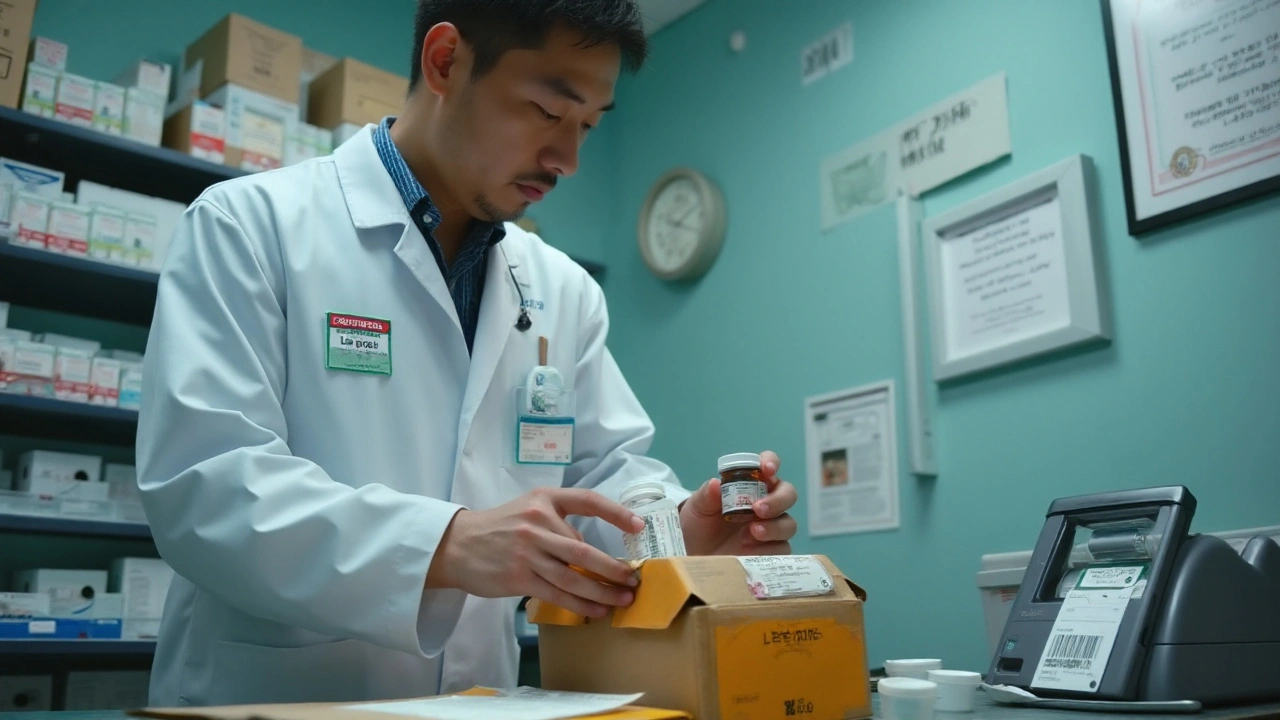
Safety checklist: dose basics, side effects, interactions, and who should pause before buying
Furosemide is dependable, but it’s not a set‑and‑forget drug. It changes your fluid and electrolyte balance, and that deserves respect. These notes are drawn from FDA labeling, MedlinePlus drug information, and mainstream cardiology guidelines used in heart failure clinics.
Use basics that help most people:
- Timing: take in the morning to avoid all‑night bathroom trips. If you have a second dose, mid‑afternoon works for many so sleep isn’t wrecked.
- Weigh yourself daily if your prescriber asked you to. A sudden jump (like 2-3 pounds in 24 hours) can be a sign to call your clinic.
- Hydration balance: don’t “chug to catch up.” Sip as directed by your care team. The goal is steady, not dry or flooded.
- Electrolytes: you may need potassium labs and sometimes supplements. Ask what your target potassium is. Cramps, weakness, or palpitations are worth a call.
Common side effects you might actually notice:
- Needing to pee-fast and often-after a dose. That’s normal. Plan bathroom access for 3-6 hours after taking it.
- Dizziness when you stand up. Move slow from sitting to standing, especially the first days or after dose changes.
- Muscle cramps or fatigue, often tied to low potassium or low magnesium.
Less common but serious-don’t ignore these:
- Fainting or confusion. Call your prescriber; if you pass out or feel close, get urgent care.
- Ringing in the ears or hearing changes, especially at high doses or with IV use and certain antibiotics. Report this quickly.
- Very low urine output, extreme thirst, or vomiting-signs of over‑diuresis or dehydration.
- Severe rash, swollen face/lips, or trouble breathing. That’s an emergency.
Drug interactions worth checking with a pharmacist:
- NSAIDs (ibuprofen, naproxen): can blunt furosemide’s effect and stress the kidneys.
- ACE inhibitors/ARBs (lisinopril, losartan): great drugs, but the combo can drop blood pressure fast when doses change. Start low, go slow.
- Digoxin: low potassium increases digoxin toxicity risk. Keep an eye on labs.
- Lithium: levels can spike-this needs close monitoring if used together.
- Other diuretics (metolazone, hydrochlorothiazide): sometimes used on purpose; the effect can be strong, so labs and close follow‑up matter.
- Ototoxic meds (like high‑dose aminoglycosides): raises ear risk when combined with high‑dose furosemide.
Who should check with their prescriber before starting or changing anything:
- Pregnant or breastfeeding. Your team will weigh risks and benefits; diuretics are not routine for normal pregnancy swelling.
- Severe kidney disease or no urine output-furosemide may not work and can be risky without close management.
- Severe liver disease. Water shifts can trigger complications; hepatology teams set tight plans here.
- History of gout. Furosemide can raise uric acid.
- Diabetes. Blood sugars can drift up; monitor as directed.
- Sulfa allergy. Most people with “sulfa” antibiotic allergy tolerate furosemide, but flag it so your clinician can judge. This is nuanced.
Two things not to do:
- Don’t use diuretics for “weight loss” or to make a scale look nicer ahead of an event. It’s water, not fat, and you can land in the ER.
- Don’t double a missed dose unless your prescriber has told you to. If you miss, take it when you remember if it’s still daytime; skip if it’s close to bedtime to protect sleep and safety.
Storage tips: keep tablets at room temp, dry, out of sunlight. Don’t store in a steamy bathroom. For travel, keep meds in original labeled bottles in your carry‑on. Heat waves and glove compartments don’t mix well with any meds.
Alternatives, comparisons, FAQs, and what to do next
If your pharmacy is out of stock, your price jumps, or you’re not getting the effect you need, there are neighbor drugs in the same family. Your prescriber decides, but it helps to know the lay of the land.
| Drug (oral) | Approx. potency vs furosemide | Half‑life | Notes | Typical US cash price (30 tabs) |
|---|---|---|---|---|
| Furosemide | 40 mg = baseline | ~2 hours | Most common; food can reduce absorption a bit | $3-$15 (coupon) |
| Torsemide | ~20 mg ≈ furosemide 40 mg | ~3-6 hours | More reliable absorption; often once daily | $8-$25 (coupon), varies |
| Bumetanide | ~1 mg ≈ furosemide 40 mg | ~1-2 hours | Very potent in small tablets | $8-$25 (coupon), varies |
Those price bands reflect common discount‑card results as of mid‑2025. Local swings happen. Your pharmacist can swap to another loop diuretic only with your prescriber’s OK.
Brand vs generic: For diuretics, generics are the norm and are considered therapeutically equivalent by the FDA when approved. If you feel different on one manufacturer vs another, tell the pharmacy. They can sometimes match a manufacturer you tolerate well.
How it stacks up vs nearby options:
- Furosemide is the cheapest and widely available. If cost and access drive your choice, it usually wins.
- Torsemide has steadier absorption and a longer tail, which some heart failure teams prefer. Slightly higher cash price, still affordable for most.
- Bumetanide is compact and potent; useful when high doses are needed or gut absorption is tricky. Price similar to torsemide in many places.
Ethical, actionable next steps (today):
- Pick a licensed pharmacy (local or mail order) and confirm they carry your strength and quantity.
- Ask your prescriber to e‑send the prescription there. If you use telehealth, make sure it’s a legitimate visit with your history reviewed.
- Apply a discount card if paying cash, or check your insurance copay. Compare a 90‑day fill for convenience.
- Set a refill reminder for when you have 10 days left. If labs are due (potassium, kidney function), schedule them now.
- On delivery day, open the package, check the pill imprint and label, and store it right. If something looks off, call the pharmacist before taking any.
Mini‑FAQ people ask right after they order:
- Can I buy furosemide online without a prescription? In the U.S., no. Legit pharmacies require a valid prescription. That’s how you avoid counterfeits and dangerous dosing.
- How fast can I get it? Many pharmacies do 3-7 business days standard or 1-3 days expedited once your Rx is verified. If you’re nearly out, call and ask about a partial local fill.
- Can I split tablets? Only if the tablet is scored and your dose allows it. Confirm with your prescriber and pharmacist. Don’t split extended‑release forms (not common for furosemide tablets).
- What if I miss a dose? If it’s still daytime and you can handle the bathroom trips, take it when you remember. If it’s close to bedtime, skip and resume tomorrow-unless your prescriber advised otherwise.
- Is alcohol a problem? Alcohol can worsen dizziness and dehydration. Many people avoid it on days they take higher diuretic doses.
- Traveling? Keep meds in your carry‑on, original labeled container. Time zone shifts: keep your dosing roughly anchored to your morning; your clinician can tailor advice for long trips.
- Do I need potassium pills? Maybe. That depends on labs, diet, and other meds. Don’t self‑start; ask your care team.
Troubleshooting for common scenarios:
- I’m uninsured and the price is higher than you said. Try two more pharmacies with a different discount card. Prices jump around because of wholesaler deals. Independent pharmacies sometimes beat chains on generics.
- I need it this week and shipping is slow. Ask your prescriber or the mail‑order pharmacy to do a one‑time local “bridge” fill for 7-14 tablets while the main order ships.
- The pharmacy says out of stock. Ask them to check sister locations, switch manufacturers, or send the prescription to another pharmacy you name. Have a backup pharmacy in mind before you hang up.
- I’m peeing constantly and feel lightheaded. Sit, hydrate per your plan, and call your clinic. They may adjust timing or dose. If you faint, seek urgent care.
- I gained 3 pounds in two days and can’t breathe well. That’s a call‑today situation for your care team. Don’t self‑double doses unless you have a written action plan.
- New ringing in my ears. Stop and call your prescriber now. Hearing changes are rare but serious.
Credible sources behind this advice: FDA drug labeling for furosemide; FDA BeSafeRx and NABP guidance on verifying online pharmacies; MedlinePlus Drug Information on furosemide; 2022 AHA/ACC/HFSA Heart Failure guideline recommendations that inform real‑world diuretic use and monitoring. If your personal plan differs, your clinician’s advice wins-your history matters.
Bottom line: you can buy furosemide online safely for a few dollars a month. Keep it legal, verify the pharmacy, use coupons wisely, and plan refills early. Do that, and the “cheap” part never has to compromise the “safe” part.
Amy Hutchinson
OMG I just bought my 90-day supply from a site that looked sketchy but the price was $2.50?? I’m not even gonna lie I thought I won the lottery. Then my pills looked weird and my ankles are still swollen?? 😭
Archana Jha
lol u think its about price? nah its the microchips in the pills that track ur bio-rhythms n send data to the pharmo-corp mainframe. they want u dependent so they can raise prices n sell u 'enhanced' furosemide 2.0 with ai diuretic optimization. the gov knows. they just dont tell u. check the nsa leaks of 2023. they called it 'loop protocol'. u think its coincidence that all the cheap sites use .xyz domains? nope. its a trap. 🌐👁️
Aki Jones
Let’s be clear: the entire “cheap generic” narrative is a manufactured illusion designed to shift liability away from pharmaceutical monopolies. The FDA’s bioequivalence standards? Arbitrary. The “discount card” pricing? A psychological anchor to normalize exploitation. And don’t get me started on the way pharmacies manipulate wholesale tiers to create artificial scarcity-this isn’t healthcare, it’s behavioral economics warfare. Also, tablet splitting? You’re risking non-uniform dissolution profiles. That’s not saving money-that’s playing Russian roulette with your electrolytes. 🚨
Jefriady Dahri
Hey everyone, I'm from India and I've been taking furosemide for 5 years now 😊 My pharmacy here gives me 30 tablets for ₹120 (about $1.50) with free delivery! Just make sure you're buying from a registered pharmacy with a valid license number. And yes, always check your potassium levels-my doc made me eat bananas daily 🍌 and it made all the difference! You got this! 💪
Andrew McAfee
Been using furosemide since 2020 and I never even knew there were discount cards. I just go to my local CVS and ask for the generic. They always know. No drama. No websites. No stress. Just walk in. Done. People overcomplicate everything these days
Andrew Camacho
Oh wow so you’re just gonna trust some random website because it’s ‘cheap’? Bro. That’s how people end up in the ER with counterfeit pills laced with rat poison and lithium. You think you’re saving $10? You’re risking your LIFE. And don’t even get me started on the ‘tablet splitting’ cult-do you know how many people have had strokes from uneven dosing? This isn’t a DIY project. This is medicine. Stop being so casual. I’m not mad. I’m just disappointed.
Arup Kuri
Anyone else notice how every single pharmacy site has the same exact layout? Same fonts. Same colors. Same phrases like 'verified' and 'licensed'? That’s not coincidence. That’s a cartel. They all use the same template from the same offshore dev shop. You think you're choosing between pharmacies? You're choosing between branches of the same corporate monster. Wake up. The prescription system is just a gatekeeping tool. They want you to feel safe while they control the flow. And the 'discount cards'? Just a flavor of the same poison
Elise Lakey
I’m new to all this and just wanted to say thank you for writing this so clearly. I’ve been nervous about ordering online because I don’t want to mess up my health. I checked the NABP site like you said and found a pharmacy near me that’s accredited. It’s still a little scary, but knowing how to verify things makes me feel less alone. I appreciate the practical tips about refills and potassium. I’m going to write them down.
Erika Hunt
I just want to say that I really appreciate how thorough this guide is-it’s not often you see someone take the time to explain not just the logistics but the underlying physiology, the psychological traps of discount marketing, and the real-world nuances of pharmacy supply chains. I’ve been on furosemide for over a decade and I still learned something new about torsemide absorption profiles. The part about tablet splitting being safe only if scored? That’s the kind of detail that saves lives. Honestly, if more medical content was written with this level of care and clarity, the internet would be a better place. Thank you for not talking down to people. You made me feel like an adult who can make informed decisions, not just a patient who needs to be managed.
Sharley Agarwal
Why do people even bother with online? Just get a prescription. Fill it. Done. You're wasting time. And money. And energy. And risking your life. Stop.
prasad gaude
You know, in India we say 'Jugaad'-a clever workaround for broken systems. Buying cheap furosemide online? It’s not about cheating the system. It’s about surviving it. My aunt took pills from a local clinic that didn’t even have a name on the bottle. She lived. She’s fine. But she also cried every time she paid for her meds. So yes, I get the risks. But I also get the silence of people who have no choice. Maybe the real question isn’t 'Is this safe?'-but 'Why does this have to be so hard?'
Timothy Sadleir
It is imperative to underscore that the acquisition of Schedule II diuretics via unaccredited digital intermediaries constitutes a flagrant violation of the Federal Food, Drug, and Cosmetic Act, as codified under 21 U.S.C. § 353(b)(4). Furthermore, the purported 'discount card' mechanisms are not statutory exemptions but rather commercial artifacts that do not confer legal immunity from liability. The conflation of cost-efficiency with therapeutic legitimacy represents a dangerous epistemological fallacy. One must consult a licensed physician, obtain a valid prescription, and procure from a pharmacy registered with the State Board of Pharmacy and accredited by the NABP. Failure to do so is not merely negligent-it is criminally reckless.
Srikanth BH
Hey, I know it feels overwhelming when you’re trying to figure this out. I’ve been there. But you’re not alone. Start small-call one pharmacy, ask them to check the price with your coupon, and just take it one step at a time. You don’t need to do everything today. Just do one thing. And if you’re nervous about side effects? Write them down and bring them to your next appointment. Your doc wants to help. You’ve got this.
Jennifer Griffith
wait so u can split 40mg pills? i did that for a year and my doc never said anything. i thought it was fine?? also why is everyone so scared of the internet?? i got mine from a site that looked like a 2005 geocities page and it was fine??
Kimberley Chronicle
Thank you for the detailed breakdown-I’m a pharmacist in the UK and this aligns so closely with our MHRA guidance. The point about cross-border imports is critical: patients often don’t realize that ‘international’ pharmacies shipping to the US are operating illegally, and the pills may not meet GMP standards. I always tell my patients: if the website looks like a scam, it probably is. Stick to the .pharmacy domain. And yes, torsemide is underused-it’s a gem for patients with erratic absorption. Keep sharing this kind of clarity.

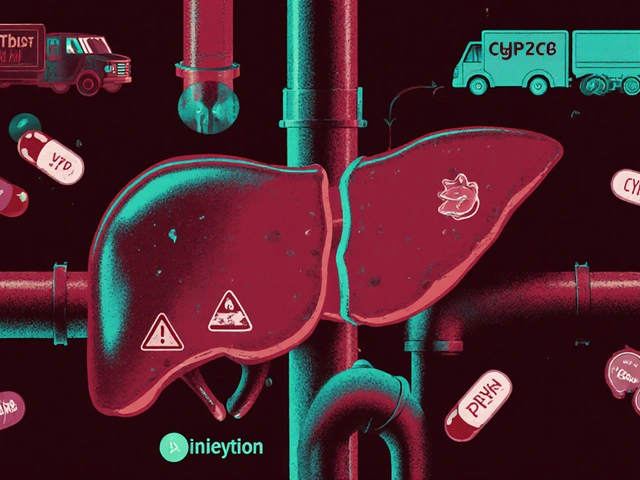
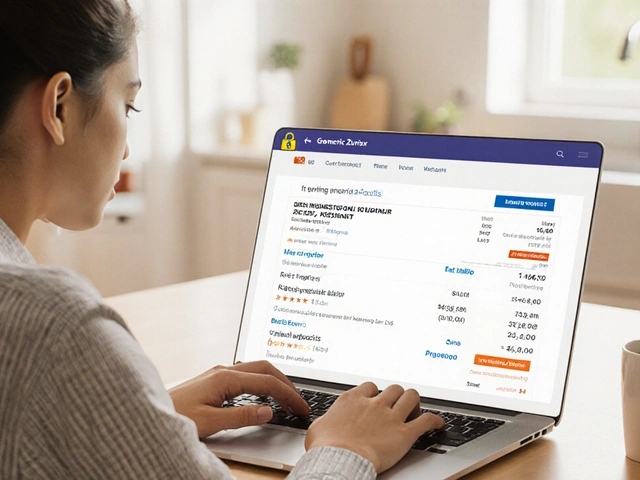
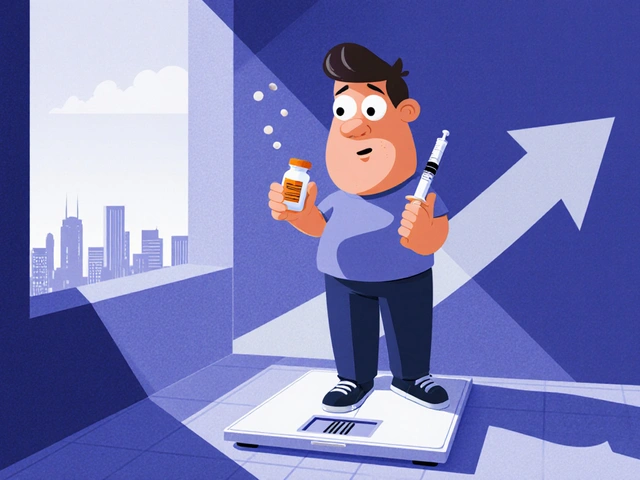
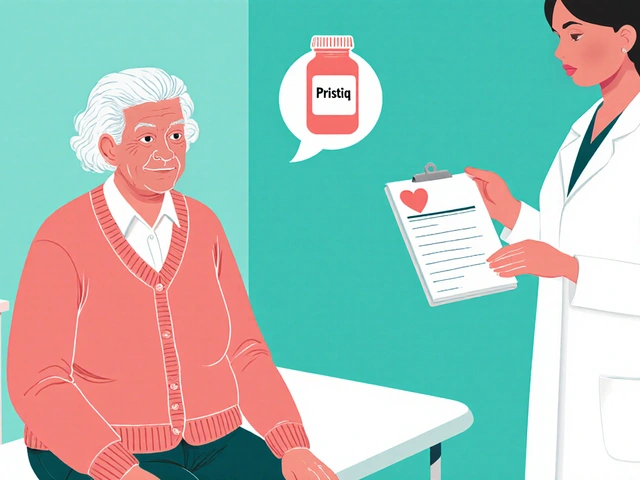
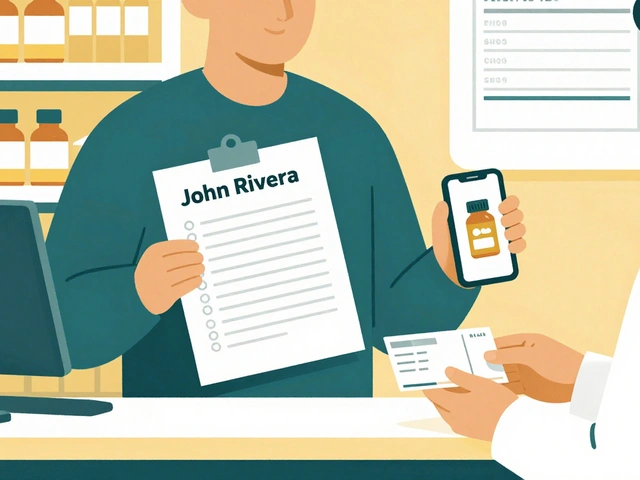
Write a comment